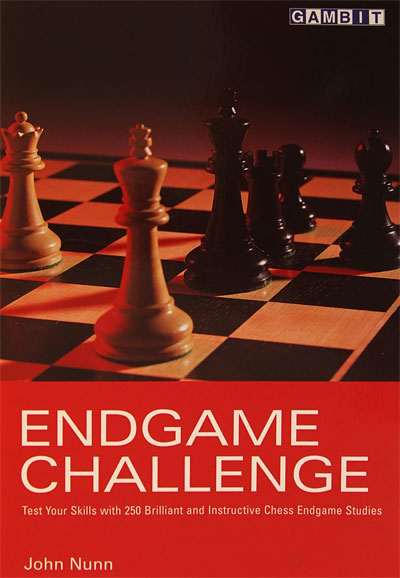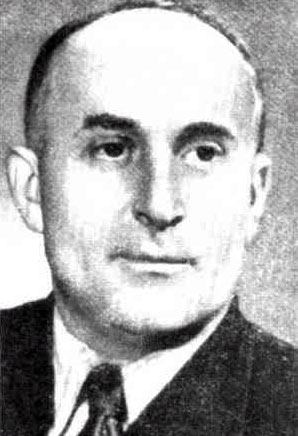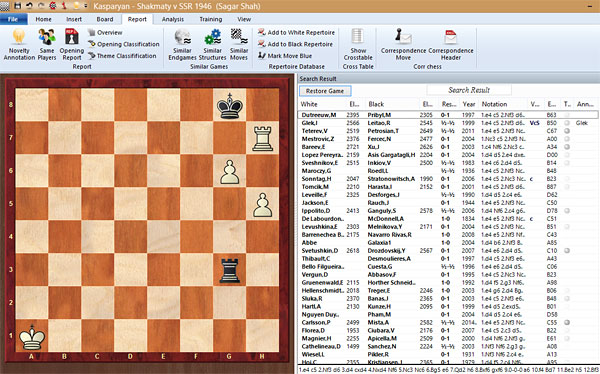


It was a lazy Sunday afternoon, the worst time in a day and a week to practise chess. I sat in my room with a laptop and chess board determined to beat the post-lunch drowsiness. I was well aware that anything heavy and tedious, like opening preparation, would immediately put me to sleep. I needed something that was interesting and would force my brain to calculate. And, of course, solving compositions/study was the best solution. I browsed through the collection of my chess books related to endgame studies. I found one by Dvoretsky and Pervakov, there was also the book of Domination in 2545 positions by Ghenrikh Kasparyan. But my attention was drawn towards a book written by one of my favourite chess authors: GM John Nunn.

250 Brilliant and Instructive Chess Endgame Studies written by John Nunn was the perfect way to beat the Sunday afternoon sleep! The book is available from Gambit Publications and on Amazon, where you can browse through a fair chunk of it. It is also available as a Kindle Edition ($11.17 – the paperback version costs $20 to $25).
I randomly opened a page in Endgame Challenge and the following study stared at me:
G. Kasparian, Shakmaty v SSSR, 1946

White to play and win
Think over the position for few minutes and after you have a good idea about the difficulties that White faces in order to win this position, have look at the answer below.
This is how John Nunn explains the answer of the study:
This type of position has occurred many times in over-the-board play, and has usually been mishandled by one side or the other. Kasparian uncovered the secrets of such positions in the 1940s, and this brilliant endgame is so striking that once having seen it, I cannot imagine anyone forgetting the key principle that lies behind White's winning plan. Normally, the ending of rook and two connected passed pawns vs rook is an easy win, but what makes this position difficult is the passive position of White's rook. If White could transfer it to, say, b5, then the win would involve little more than playing the king over to support the pawns. Therefore Black has to play so as to tie White's rook down on h7.
It is easy to see that White cannot move the rook away when Black's rook is on the h-file, attacking the h5-pawn, but White also cannot move his rook away when Black's rook is on the g-file. This is because Black meets Ra7 with Rg5, when the rook has to go back to h7. When the black rook is on other files, White can activate his rook and win (as something like Rf5 could be met with h6 and the g6 pawn is not hanging); thus Black's rook is confined to the g- and h-files. White appears to have more freedom, at least as regards his king movements, and at first it seems simple to win by just playing the king to the kingside, dislodging the enemy rook. If Black's rook then moves along the file, White's king can advance, while if it moves along the rank then White's rook is free to be activated. However, it turns out that if White's king is on g2 then Black can simply play Ra3, the point being that 2.Rb7 Ra5 3.h6 can be answered by 3…Rg5+, picking up the g-pawn.
Similarly, when White's king is on h2, 1…Ra3 2.Rb7 Ra5 3.h6 Rh5+ wins the h-pawn. It follows that in order to win, White must dislodge the black rook from g3 and h3 without playing his king onto the g- or h-file. The conclusion is that the position with Kf2 vs Rh3 is reciprocal zugzwang (whichever side is to move is at a disadvantage). Black to move cannot keep his rook on g3 or h3, while White to play cannot dislodge the rook without playing Kg2, when Black can reply ... Ra3. As we shall see, this position of reciprocal zugzwang determines White's first move.
Wasn’t it a beautiful study? At first sight 1.Ka2!! looks so illogical, but when you understand the ideas behind it, the move is absolutely natural. This is the beauty of chess composition. Complicated, yet very simple. Play through it on our JavaScript board:

[Event "?"] [Site "?"] [Date "2015.01.30"] [Round "?"] [White "Kasparyan"] [Black "Shakmaty v SSR 1946"] [Result "*"] [Annotator "Sagar Shah"] [SetUp "1"] [FEN "6k1/7R/6P1/7P/8/6r1/8/K7 w - - 0 1"] [PlyCount "15"] [EventDate "2015.??.??"] 1. Ka2 $3 {White wins now. The little rule that I have formulated here is to move the king on the opposite coloured square on which the black rook stands if White wants to win.} (1. Kb2 $2 {This is the most natural move but surprisingly leads to a draw after} Rh3 2. Kc2 Rg3 3. Kd2 Rh3 4. Ke2 Rg3 5. Kf2 Rh3 {And now we have a position of reciprocal zugzwang.} 6. Kg2 Ra3 $1 {The White rook cannot yet come out of h7 as} 7. Rb7 {is met by} (7. Kh2 Rb3 8. Ra7 Rb5 9. h6 Rh5+ $11) 7... Ra5 $1 8. h6 (8. Rh7 Ra3 $11) 8... Rg5+ $11 {winning the pawn.}) (1. Kb1 $2 Rb3+ $1 2. Kc2 Rg3 $1 {Just as White king would like to move to square that is opposite of the black rook, the black rook would also love to do the same.} 3. Kd2 Rh3 4. Ke1 Re3+ 5. Kf2 Rh3 $1 $11 {And as we already know this is a position of reciprocal zugzwang.}) 1... Rh3 {Black is forced to keep his rook on the g and h-files because if he moves his rook away from those files then White wins simply by transferring his rook on the fifth rank.} (1... Rf3 $2 2. Rb7 Rh3 (2... Rf5 3. h6 $18) 3. Rb5 $18 {And now White has to just bring his king over. Black can do absolutely nothing.}) (1... Rg4 { Giving up the cut off on the third rank is tantamount to defeat.} 2. Kb3 Rh4 3. Kc3 Rg4 4. Kd3 Rh4 5. Ke3 Rg4 6. Kf3 Rh4 7. Kg3 Ra4 8. Rb7 Ra5 9. Kg4 $18 {The king can come to the aid of the pawns.}) 2. Kb2 Rg3 3. Kc2 Rh3 4. Kd2 Rg3 5. Ke2 Rh3 6. Kf2 $18 {And there we are. The position of reciprocal zugzwang has been reached with Black to play. Black can no longer keep his rook on the g and the h-files and hence loses the game.} Ra3 (6... Rh1 7. Kg3 $18) 7. Rb7 $1 Rh3 (7... Ra5 8. h6 $18) 8. Rb5 $18 {The rest is easy. The white king comes up the board and helps to queen his pawns who have been patiently waiting on h5 and g6.} *

Hats off to the greatest chess composer of all time, Genrikh Kasparian!
The above study was a very practical endgame position and as John Nunn rightly said the chances of it occurring in an over-the-board tournament game are pretty high. At this point of time if I were to ask you: if this same position were to arise in your game tomorrow, would you be able to blitz out the moves and take the game to its logical conclusion? “Yes of course!” would be the emphatic answer of all the readers who have understood the position well. But what if this position were to arise in your tournament game after a year or two and you have only a few seconds left on your clock? Would you be able to remember all the subtleties inherent in the position? Would you be able to recollect that Kf2 vs Rh3 is a position of mutual zugzwang and that as a defender you must keep your rook on the g and the h-file? While those endowed with an eidetic memory would be able to do that, for mere mortals like me remembering these intricacies over a long period of time is simply impossible.
There is one thing that helps me in such situations and that is the study of similar positions that have occurred in practical games in the past. Once we have seen five to six examples of such a similar position from games of other players, it would be almost impossible to forget the analyses and its conclusions.
But how would we be able to gather these similar positions? For players who could afford a coach, this can be taken care of. But mind you, only a highly experienced and qualified coach would be capable of doing that. So what is to be done? Are we doomed to losing those crucial half or full points in tournaments due to our poor memory?
This is where ChessBase 13 comes to the rescue.

Set up the position you would like to analyse and then click on “Report” and then “Similar Endgames”

ChessBase will look into all the games of your reference database (in my case it is the Mega-Database 2015) and find the endgames which are similar to the one that you are trying to search. As you can see on the right of the screen there are loads of games that bear resemblance to the Kasparian study.
The difference between this feature and filtering games according to a given position is that in the latter you only get games in which the exact position that is on the board occurred. In case of Similar Endgame function the position will not be totally same, but the pawn structure and the number of pieces would be identical. It is also colour-independent.
Using this feature, I was able to find many endgames that were similar to the Kasparian study. I short listed six positions and have posed different questions in each of them. Your task is to think over them and answer those questions. You can then verify with the solutions that are given at the end. Note: If you haven’t understood the Kasparian study fully, I would recommend you to go back and look over it carefully and only then attempt these training questions given below.
Maroczy,Geza - Roedl,Ludwig, Dresden 1936

It is black to play. What is his winning move?
Sonntag,Hermann - Stratonowitsch,Andre,
GER-ch op U25 Willingen 2006

Black to move
This is the basic position of the reciprocal zugzwang. As it is Black to move, the game is drawn. However White went on to lose it. From the sequence of moves given below, pinpoint the exact move where the white player commits a mistake and the game cannot be saved:

[Event "GER-ch op U25"] [Site "Willingen"] [Date "2006.06.06"] [Round "5"] [White "Sonntag, Hermann"] [Black "Stratonowitsch, Andre"] [Result "0-1"] [ECO "B23"] [WhiteElo "2047"] [BlackElo "1990"] [Annotator "Sagar Shah"] [SetUp "1"] [FEN "8/5k2/7R/8/7p/6p1/7r/6K1 b - - 0 74"] [PlyCount "40"] [EventDate "2006.06.04"] [EventRounds "9"] [EventCountry "GER"] [Source "ChessBase"] [SourceDate "2006.11.23"] 74... Kg7 75. Ra6 Rb2 76. Ra4 Rh2 77. Ra6 Kf7 78. Rh6 Ke7 79. Rg6 Kf8 80. Rh6 Kf7 81. Ra6 Rc2 82. Rh6 Rc4 83. Kg2 Rg4 84. Ra6 h3+ 85. Kxh3 g2 86. Kxg4 g1=Q+ 87. Kh5 Qd1+ 88. Kg5 Qd2+ 89. Kh4 Qf4+ 90. Kh5 Qf5+ 91. Kh6 Qh3+ 92. Kg5 Qg2+ 93. Kh4 Qe4+ 94. Kg5 0-1
Sveshnikov,Evgeny (2515) - Inkiov,Ventzislav (2500), Athens 1983

Black to play. The white pawns combined with the rook are
cruising towards victory. How should Black defend?
Ippolito,Dean (2413) - Ganguly,Surya Shekhar (2578)
World op 34th Philadelphia, 30.06.2006

Black to play. This position is the same as the previous game between Sveshnikov-Inkiov
apart from the fact that the black king is on h8 instead of g8. Does that make a difference?
Carlsson,Pontus (2499) - Mista,Aleksander (2582) [C55]
CZE-chT 1314 Czechia 16.02.2014

White played 64.Rb7. In this position, 64...Kg8 would have been the safest way to draw the game. But Mista decided to spice up things a little with 64...Ra4. What do you think should be the result of the game with correct play by both sides?
Dutreeuw,Marc (2395) - Pribyl,Martin (2305)
Liechtenstein op 15th, Liechtenstein 1997

In this game which is some sort of comedy of errors, you have to find the total number of mistakes made in all by both sides in this sequence of six moves:

[Event "Liechtenstein op 15th"] [Site "Liechtenstein"] [Date "1997.??.??"] [Round "8"] [White "Dutreeuw, Marc"] [Black "Pribyl, Martin"] [Result "0-1"] [ECO "B63"] [WhiteElo "2395"] [BlackElo "2305"] [Annotator "Sagar Shah"] [SetUp "1"] [FEN "8/7k/R7/8/p7/1p6/r7/1K6 w - - 0 68"] [PlyCount "12"] [EventDate "1997.??.??"] [EventRounds "9"] [EventCountry "LIE"] [Source "ChessBase"] [SourceDate "1998.11.10"] {In this game which is some sort of comedy of errors, you have to find the total number of mistakes made in all by both sides in this sequence of six moves.} 68. Kc1 Kg7 69. Kb1 Kf7 70. Rh6 Ke7 71. Rg6 Kd7 72. Rh6 Kc7 73. Rg6 Rh2 0-1
The solutions to the six endgames given above will be provided on Monday
– have a nice weekend working on them!
One of the biggest advantages of the “Similar Endgame” function is that we realise how the position that we are looking for arose in the game. This is very useful as it gives us a logical link to the endgame and how it was reached. This helps us to improve our endgame technique.
After solving the Kasparian study and working on these six practical positions I am sure that you are never really going to forget this ending! Even if someone woke you up in the middle of the night you would be able to accurately tell them the secrets of this endgame! And it is precisely for this reason I think that the “Similar Endgame” function in ChessBase 13 is one of the best ways to learn endgames for a tournament player.